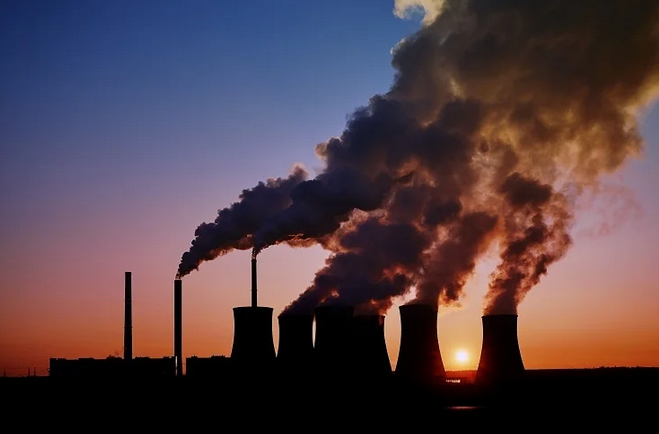
G7 calls on majors economies to go net zero by 2050, let emissions peak by 2025

The G7 countries have asked all major economies, including India and China, to commit to reaching net zero emissions by 2050 and let their emissions peak by 2025.
However, in view of the energy crisis linked to the ongoing Russia-Ukraine war, the grouping allowed developed countries public investment into gas as a temporary response. “We call on all Parties especially major economies whose 2030 NDC targets or long-term low GHG emission development Strategies (LTSs) are not yet aligned with a 1.5 degree Celsius pathway and net zero by 2050 at the latest, to revisit and strengthen the 2030 NDC targets and publish or update their LTSs as soon as possible and well before UNFCCC-COP28, and to commit to net zero by 2050 at the latest,” a G7 communique issued on Saturday read.
“Furthermore, we call on all Parties to commit at UNFCCC-COP28 to peak global GHG emissions immediately and by no later than 2025,” it said.
The G7 countries said it is necessary to accelerate the “phase out of their dependency on Russian energy” and address the global impact of the Russia-Ukraine war on energy supplies, gas prices and inflation, and peoples lives. “In this context, we stress the important role that increased deliveries of LNG can play and acknowledge that investment in the sector can be appropriate in response to the current crisis and to address potential gas market shortfalls provoked by the crisis. In the exceptional circumstance of accelerating the phase out of our dependency on Russian energy, publicly supported investment in the gas sector can be appropriate as a temporary response,” the communique said.
Experts denounced the move, saying it goes against calls from the Intergovernmental Panel on Climate Change and International Energy Agency to stop new investments in fossil fuel production, and is likely due to intense lobbying from German Chancellor Scholz in the past week.
“The G7, among the richest nations in the world, have once again proved to be poor leaders on tackling climate change. Paying lip service to the need to keep global warming below 1.5 degree Celsius while at the same time continuing to invest in gas shows a bizarre political disconnect from science and a complete disregard of the climate emergency,” said Harjeet Singh, the head of Global Political Strategy, Climate Action Network International.
The G7 countries said they ended new direct government support for unabated international thermal coal power generation in 2021 and called on other countries, especially major economies, to do the same.
They also committed to work together with other developed countries to fully meet the goal of jointly mobilising USD 100 billion annually in climate finance (for the period from 2020 to 2025) this year three years late — to help developing and poor countries fight climate change.
However, the communique released on Saturday after the meeting of G7 leaders in Hiroshima, Japan, doesnt mention if this amount will be increased for the post-2025 period.
India has committed to going net zero by 2070 and China by 2060. Net zero means achieving a balance between the greenhouse gases put into the atmosphere and those taken out.
India submitted its long-term low emission development strategy (LT-LEDS) to the UN climate body at COP27 in Egypts Sharm el-Sheikh, detailing what it would do to achieve the net zero emissions target by 2070.
In 2021, Indias then environment secretary Rameshwar Prasad Gupta had said that the countrys emissions would peak between 2040 and 2045 and then decrease.
At the G7 Ministers Meeting on Climate Energy and Environment in Japans Sapporo last month, Union Environment Minister Bhupender Yadav had said that meeting the global target of achieving net zero emissions by 2050 will require developed nations to scale up their emission reduction efforts.
India has maintained that the historical cumulative emissions of countries should be the measure of their responsibility to raise ambitions and that some developed nations “must reach net zero even before 2030”.
The group of seven, comprising the US, France, the UK, Italy, Germany, Canada and Japan, represent the worlds richest democracies. Under its G7 presidency, Japan invited India and seven other countries to the summit as guests.
The Earths global surface temperature has risen by around 1.15 degrees Celsius as compared to the pre-industrial (1850-1900) average and the CO2 spewed into the atmosphere since the start of the industrial revolution is closely tied to it.
Major damage had already been done before the 1990s when economies like India started to develop, reports suggest.
According to the “Global Carbon Budget Report – 2022”, more than half of the worlds CO2 emissions in 2021 were from three places — China (31 per cent), the US (14 per cent), and the European Union (eight per cent).
Ranking fourth, India accounted for seven per cent of global CO2 emissions.
However, at 2.4 tCO2e (tonne carbon dioxide equivalent), Indias per capita greenhouse gas emission is far below the global average of 6.3 tCO2e, according to a report released last year by the United Nations Environment Programme.
Per capita emission in the US (14 tCO2e) is far above the global average, followed by Russia (13 tCO2e), China (9.7 tCO2e), Brazil and Indonesia (about 7.5 tCO2e each), and the European Union (7.2 tCO2e).
(Except for the headline, this story has not been edited by The Federal staff and is auto-published from a syndicated feed.)

